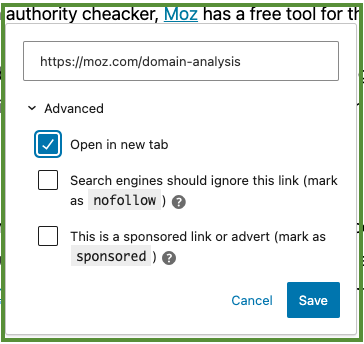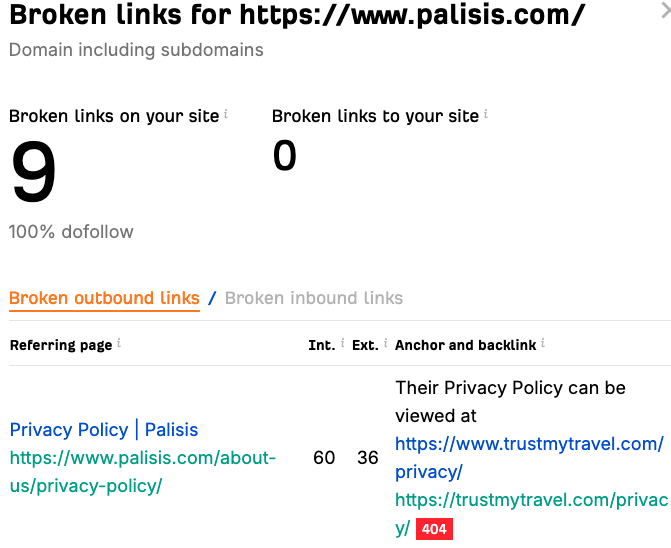In our post about working with journalists to improve your marketing, we mentioned search engine optimisation (SEO), the best practices to get your website to show up and rank well on Google. A key element of SEO is link-building or getting backlinks. These links direct visitors to your website from elsewhere on the internet. However, not all links are of equal value, and the wrong kind of backlinks can actually hurt your Google rank.
In this post, we’ll cover the basics of backlink strategy and give you some suggestions to help you get better links, rank better, and generate more traffic to your website.
Before we do, quickly check your score here to see where you are starting from, ahrefs

Focus on high-authority and/or niche-specific links
As we mentioned in our guide to getting attention from media and journalists, the size of the platform is less important than its authority in your niche. Google is pretty clever, and it has ways of keeping track of which blogs and publications are well-read and respected within a given niche, even if they’re small in the grand scheme of the internet. If someone reaches out to you offering to guest blog, or if you want to know if you should link to them, use a domain authority cheacker, Moz has a free tool for this.
Getting your walking tour linked to in a travel blog is probably better than getting links in a generic news blog (unless it’s a major outlet). Getting links in the go-to walking tour review blog is better still.
DoFollow vs. NoFollow
There are two kinds of backlinks: DoFollow and NoFollow. The difference is in their HTML code. Basically, as the names suggest, DoFollow links give you domain authority. NoFollow links don’t. For a deeper look at how this works and why, check out Mailchimp’s comprehensive guide. The two important takeaways for your backlink strategy are:

- There are some situations where you don’t want a backlink, usually because it could be read by Google as spam and therefore hurt your domain authority.
- NoFollow links can still get you traffic and help improve your SEO in non-technical ways.
Action item: Pitch guest posts or features in niche travel directories to build authority and relevance. As with pitching any news site, put the emphasis on what’s in it so they can cover you or feature your content.
Guest blogging
Probably the most valuable and accessible thing you can do for link-building is to guest blog. It puts your name out there, helps you network and be a thought leader, and it’s a way to offer great content to blogs in your niche—which boosts their domain authority too.

Action Item: Create guest posts around topics related to your tour business like adventure travel, local history, cultural experiences, or hidden gems in your city.
PR & newsworthy content
As we mentioned in the post on working with journalists, major news outlets are unlikely to give you traditional inbound links. However, mentions in the press, or, even better, these NoFollow links and keyword mentions can raise your profile and increase organic traffic to your website–which is what SEO is all about.
Action item: Craft newsworthy content or reports that the media will find appealing, leading to valuable backlinks. For a detailed guide on how to do this, check out our post on working with journalists.
Linkable assets
You can attract natural backlinks through highly shareable content. These can help in a NoFollow, branding sense by boosting your profile and driving brand awareness and thought leadership.
But there’s a technical side to asset creation. Through metadata, alt-text, and other tags, you can leave a digital trail back to your site from wherever these assets end up, building backlinks in the process. This gets into technical SEO, the best practices for which are always changing, so do a little homework first if you’re not sure how to go about it.
Action item: Invest in creating infographics, videos, or resource guides that can serve as reference materials for other sites.
Broken link building

Maybe you already have old, outdated links all over the internet and blogosphere within your niche. Find these links and try to get them replaced with new ones. Put something else in place of the article you took down ages ago. Update that link to your 2018 ultimate guide with this year’s edition.
Broken links hurt your site and the pages that host them, so it’s in everyone’s best interest to replace these with working ones.
Action item: Search for broken links on travel-related websites and offer up-to-date content as a solution. Keep track of your links moving forward to make this easier next time. Here’s a great free tool to run a check now, ahrefs.com.

Don’t forget internal links
This isn’t part of your backlink strategy, but while you’re link-building, it makes sense to ensure that your internal links are functioning and that you have plenty of them. These are links that connect one page or post on your site to another. It’s a signal to Google that your site is healthy and active and users are likely to have a good experience when they visit your pages and engage with your content.

Action item: Find places in your web copy and blog content where you reference products, pages, or other content on your site. Provide links where you haven’t already.
Backlink strategy is an art and a science
We hope this guide gives you some valuable pointers and makes one thing clear: link-building is about more than technical SEO and getting high-authority backlinks. In a broader sense, it’s about how you present your business online. It’s like how “style” isn’t only a question of where to show, though that might be part of it.
Good backlinks get you some traffic and make Google happy, great backlinks connect your business with the topics and online conversations that matter most to people who will love what you do when they find click through to your website.

 Copy link
Copy link

